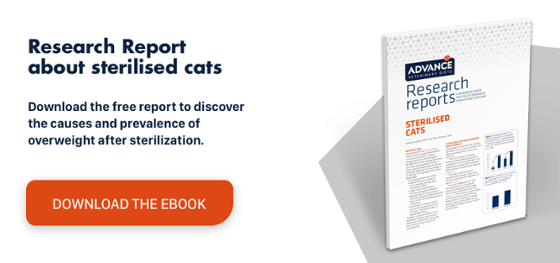Sterilisation for cats and dogs: an advantage or unnecessary risk?
Sterilisation is often used as a means of controlling pet populations and can also confer some health and behavioural benefits. It is one of the main strategies for combating pet abandonment, as control over birth rates reduces the number of large litters and therefore the number of abandoned animals. Learn more about abandonment in the Affinity Foundation study on abandonment, loss and adoption of pets in Spain 2016.
The sterilisation of cats and dogs has increased significantly over the last 30 years or so. However, this increase does not apply equally to all countries. While it is a widespread practice in the United States, for example, only a small percentage of pets are sterilised in certain European countries.
New studies have recently revealed the link between sterilisation and certain health problems in animals.Sundburg (2016) reported a correlation between sterilisation and certain neoplasms and types of joint dysfunction. Hart (2014) highlighted the diversity of these health problems depending on the animal’s breed, sex and age at sterilisation.
Be that as it may, there is a long history of data that shows that the sterilisation of dogs reduces the risk of certain reproductive problems, such as mammary cancer, pyometra or testicular cancer.
According to the American College of Theriogenologists (ACT) and the Society for Theriogenology (SFT), any pets not intended for breeding purposes should be sterilised or neutered. Nevertheless, both organisations believe that the decision to sterilise a pet should be studied on a case-by-case basis considering the pet’s age, breed, sex, intended use, family environment and behaviour.
Points to consider for the sterilisation of pets:
- Animal health issues: sex hormones produced by the ovaries and testicles are only present in intact males and females. Sterilisation of young animals, particularly before they reach hormonal maturity, deprives the body of the positive health effects of these hormones.
In most cases, the benefits of sterilisation outweigh the benefits of exposure to sex hormones, but this is not necessarily true in all cases.
This is because sterilisation before puberty or sexual maturity can increase the risks of some diseases in certain breeds, so pet owners should always have the option of leaving the animal intact.
Research has shown that steroidal sex hormones can produce various damaging effects. Sterilisation will eliminate these hormones and, therefore, reduce the risk of these diseases.
- Animal behaviour: several studies have observed that sterilisation can produce both advantages and disadvantages in terms of animal behaviour. Sterilisation has been associated with less aggressive behaviour in treated animals.
- Quality medical care: depending on the country or system, sterilisation may be subject to rules dictating the time or need for the animal to undergo surgical treatment.
Restricting and reducing the group of purebred animals will greatly hinder medical research into conditions that are particular to specific breeds, thus slowing progress in medical and surgical knowledge.
- Public health: making sterilisation mandatory for pet licenses may encourage more owners to seek veterinary help to avoid fines and legal repercussions if sterilisation is not performed within the prescribed time frame.
When owners try to avoid veterinary care for their pets, animals are at a greater risk of failing to receive adequate routine vaccinations, and incorrect deworming programmes can increase the rate of disease transmission to the public.
Therefore, the sterilisation of all cats and dogs should be considered following a case-by-case basis, assessing each of the aspects mentioned above.

